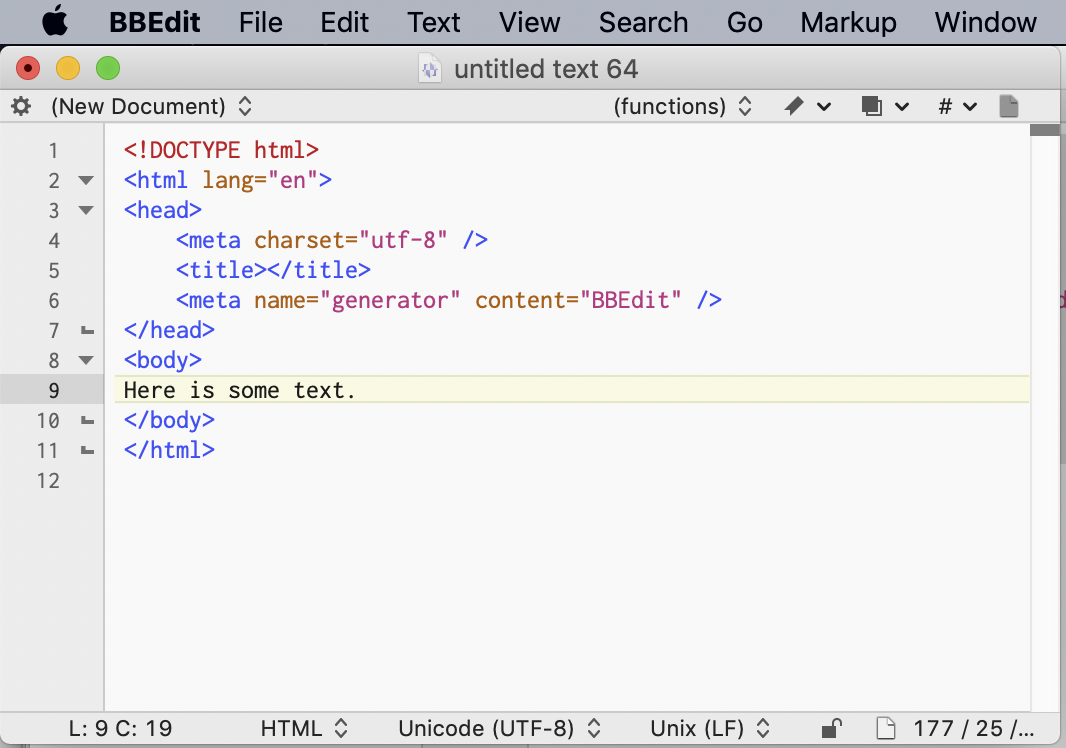
- AWS TEXTWRANGLER FOR WINDOWS HOW TO
- AWS TEXTWRANGLER FOR WINDOWS MAC OS X
- AWS TEXTWRANGLER FOR WINDOWS MAC OS
- AWS TEXTWRANGLER FOR WINDOWS SOFTWARE
- AWS TEXTWRANGLER FOR WINDOWS FREE
Only the directory where to find it is different: Fortunately, this file has the same format on most operating systems (including Windows, Mac OS, and Linux). The last step is to add the newly assign static IP address to the hosts file of the host OS (i.e. In my case, this is “10.211.55.20” (see the screenshot above).ĭNS Server: This is usally the same address as the gateway. In Parallels Desktop this is the first IP address of the IP range specified in the options.
AWS TEXTWRANGLER FOR WINDOWS HOW TO
So, I’ve compile a small list of how to do this on some of the popular operating systems: This procedure highly depends on the operating system your virtual machine is running. Here you need to assign it one of the IP addresses we’ve just freed. Next, start the virtual machine you want to assign a name to. Assign the static IP address in the virtual machine ∞
AWS TEXTWRANGLER FOR WINDOWS FREE
This will free the first 20 IP addresses (1 – 19) so that they can be used as static IP addresses. I’ve set it to 20 in the screenshot above. There you select the network type you used for your virtual machine (either Shared or Host-Only) and change the last number group of the IPv4 DHCP start address. In Parallels Desktop, go to the program’s settings (not the settings of the virtual machine), then to Advanced and click on Change Settings. (This probably requires all virtual machines to be shut down.) By default, at least in Parallels Desktop, the DHCP server take up all available IP addresses in the specified IP range. To use an IP address we first need to make sure that there are IP addresses free to be used. Free some IP addresses (from the DHCP server) ∞ the simulated computer) decide which IP address to use. So, the way to go is to let the virtual machine (i.e. Which of these adapters then would the hyper visor assign the static IP address to? That’s probably why none of the hyper visors I used provided an option for this (at least none that’s easily reachable). A virtual machine could itself simulate multiple network adapters where each one would acquire an IP address.
AWS TEXTWRANGLER FOR WINDOWS SOFTWARE
Simply tell your hyper visor software what IP address to assign to the virtual machine. In my opinion that latter would be the cleaner way. the simulat ing program) decide what IP address to use. the simulat ed computer) decide what IP address to use. one that stays the same every time you start your virtual machine) one can think of two ways of doing this: The remainder of this article describes the points above in more detail. Assign a static IP address to the virtual machine (from within the virtual machine see reasoning below).If you really know your way around your OS, here’s the short version of what we’re going to do: So, how does one assign such a name to a virtual server? That’s what this article is about.

We didn’t need to know its IP address – which is the point of using DNS names. Here, we used the DNS name of our virtual server (called ubuntu-server) to do a ping. The goal is to be able to do something like this: $ ping ubuntu-server

VMWare, Parallels, or Virtual Box) and created a virtual machine with it. … know what an IP address is and what’s it used for.
AWS TEXTWRANGLER FOR WINDOWS MAC OS
AWS TEXTWRANGLER FOR WINDOWS MAC OS X
This tutorial shows how to do this with a Ubuntu 11.10 Linux server running under Parallels Desktop 7 on Mac OS X Lion. Do this is not very complicated, it requires some technical skill though. Assigning a DNS name to a virtual machine can be a convenient thing.


 0 kommentar(er)
0 kommentar(er)
